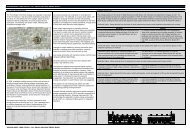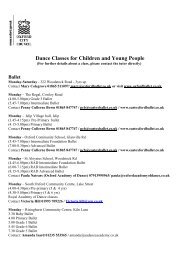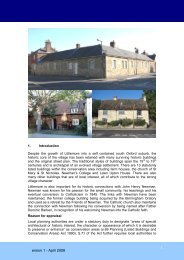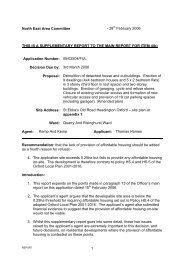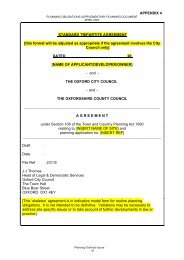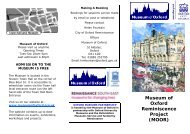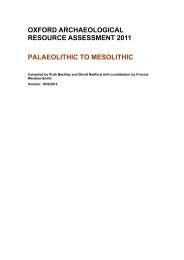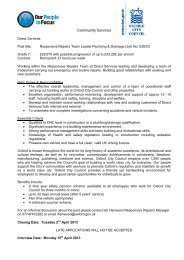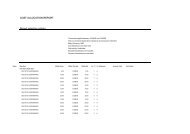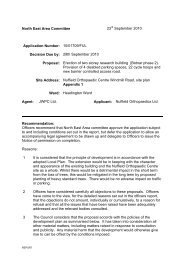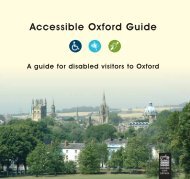Post-medieval Oxford - Oxford City Council
Post-medieval Oxford - Oxford City Council
Post-medieval Oxford - Oxford City Council
You also want an ePaper? Increase the reach of your titles
YUMPU automatically turns print PDFs into web optimized ePapers that Google loves.
approach to the south, seen during excavations in 1960 (UAD1294). The library<br />
capacity was enlarged in 1910 when an underground store was built below the<br />
Camera and the square to the north (UAD128). Timbers from the roof structure of the<br />
Radcliffe Camera dome have been subject to tree ring dating, producing a date<br />
range of 1660-1741. Documentary records indicate that the decision to substitute a<br />
timber roof for the planned stone dome was taken in 1741 (Worthington and Miles<br />
2007). Detailed archaeological analysis of their fabric for the Radcliffe Camera has<br />
been undertaken by Gillam (1995).<br />
Holywell Music Room<br />
The Music Room opened in 1742 and is thought to be the oldest surviving concert<br />
hall in the world (Hibbert 1988). A building survey was carried out in 1981 by the<br />
RCHME Architectural Division, however no further details are available (RCHME<br />
1981).<br />
University Real Tennis Courts<br />
The University Real Tennis Courts are located to the rear of the <strong>Post</strong>masters Hall on<br />
Merton Street. The current courts date from around 1798 when they replaced the<br />
earlier 16th century courts following a fire (Poore et al. 2006: 213). (See above.)<br />
The Radcliffe Observatory<br />
The Radcliffe Observatory was built by the university in 1772. The upper part is a<br />
version of the Tower of the Winds in Athens (S891). It continued in use as an<br />
observatory until 1935, after which it was transferred to the Radcliffe Infirmary. Since<br />
1976, it has been part of Green College. Excavations at the former Radcliffe Infirmary<br />
site in 2009 revealed evidence relating to the Observatory grounds, boundary wall<br />
and garden features (Braybrooke 2010). Building survey during internal renovations<br />
uncovered evidence of the masonry bases of the fixed telescopes, and the slots in<br />
the roof that were opened to take meridan readings (<strong>Oxford</strong> Archaeology<br />
forthcoming).<br />
The university press<br />
The <strong>Oxford</strong> University Press (OUP) was founded in the city in 1478 and was one of<br />
the first printing presses in England. However, it was not until the late 16th century<br />
that the organisation was formalised. In the 17th century, the OUP obtained the rights<br />
to print the King James Authorised Version of the Bible. In the post-<strong>medieval</strong> period<br />
the press was housed in the Sheldonian Theatre between 1669 and 1713 when it<br />
moved to the Clarendon Building.<br />
OXFORD ARCHAEOLOGICAL RESOURCE ASSESSMENT- POST MEDIEVAL<br />
44



